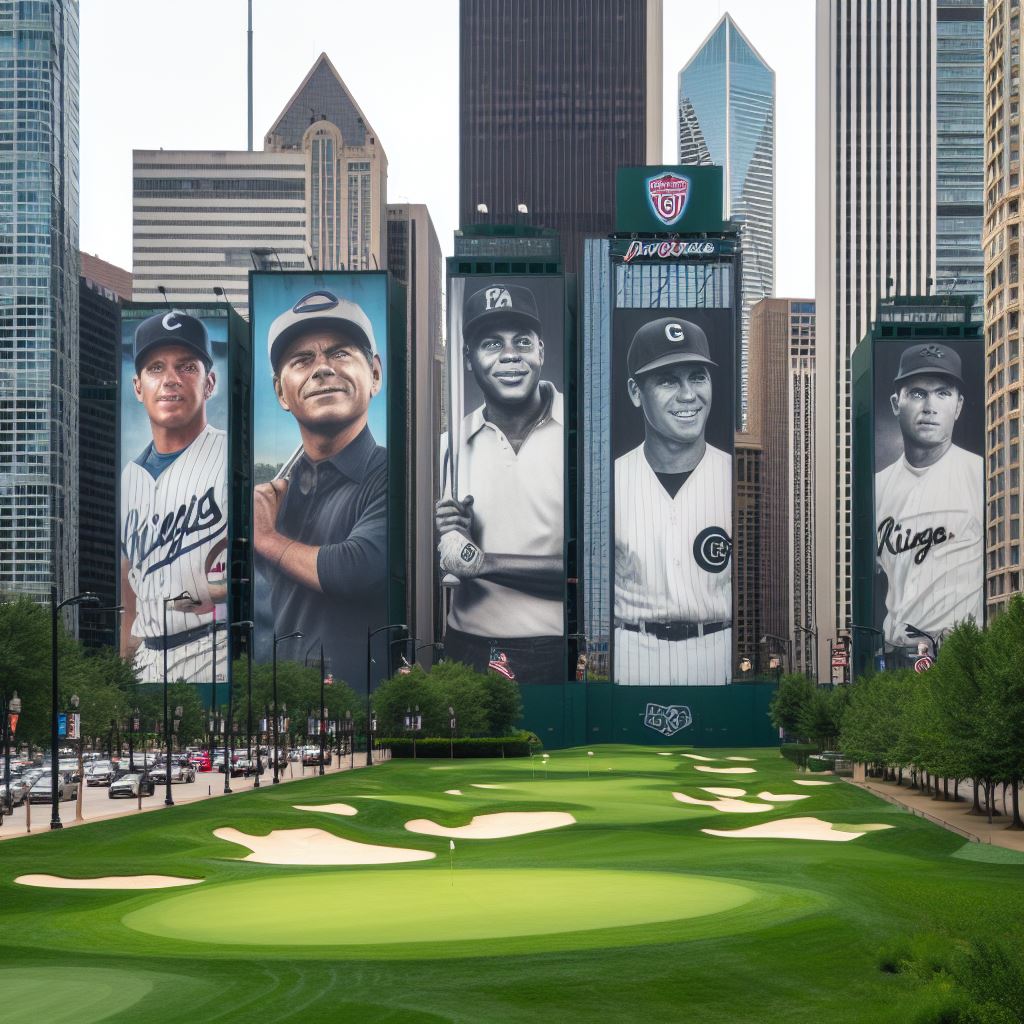Golf FAQs: How does Golf Fade Compare to Golf Draw?
When it comes to mastering your golf swing, understanding the fundamentals of the fade and draw shots is essential.
These two shot shapes, although different in technique, can greatly enhance your overall golf swing and improve your game.

In this section, we will explore the world of golf shot shapes, specifically the fade and draw shots, and delve into how they can benefit your golf swing technique.
Key Takeaways:
- A fade shot tends to shape the ball from left to right, while a draw shot shapes it from right to left.
- A fade shot is more reliable and easier to control, making it ideal for certain course situations.
- A draw shot offers increased distance and the ability to shape shots in a specific direction.
- Mastering one shot shape before attempting both draws and fades consistently is important.
- The Alignment Disc can be used as a valuable training aid to refine your desired swing path for each shot shape.
Benefits of the Fade and Draw Shots
The fade and draw shots offer distinct benefits that can greatly improve your golf shot shape control. Understanding these advantages and incorporating them into your game can take your golf swing technique to the next level.
When it comes to golf ball flight, the fade shot is known for its reliability and consistency. By shaping the ball from left to right (for right-handed golfers), the fade shot minimizes side spin, resulting in a more controlled trajectory. This makes it easier to predict how the ball will behave on the course and provides greater accuracy in hitting your target.
On the other hand, the draw shot offers increased distance and the ability to shape shots from right to left (for right-handed golfers). This shot is particularly useful for holes that dogleg left or when aiming for a left pin position. By mastering the draw shot, you can add variety to your game and navigate challenging course layouts with greater ease.
Both the fade and draw shots contribute to improved golf shot control. Whether you need to curve the ball around an obstacle or adjust for wind conditions, having the ability to shape your shots can give you a significant advantage. By becoming proficient in both shot shapes, you gain versatility and adaptability on the golf course.
| Advantages of Fade Shot | Advantages of Draw Shot |
|---|---|
| More reliable and consistent | Increased distance |
| Less side spin for improved accuracy | Ability to shape shots from right to left |
| Ideal for right pin positions and doglegs right | Useful for left pin positions and doglegs left |
To achieve these benefits, it is important to focus on one shot shape at a time and master it before attempting to hit both fades and draws consistently. This allows you to develop a solid foundation and understanding of each shot shape, maximizing your chances of success.
To help refine your desired swing path for each shot shape, consider using the Alignment Disc as a training aid. This tool provides visual feedback and helps you consistently execute the correct swing motion for fades and draws. With practice, you can develop precise shot shape control and elevate your overall golf performance.

Mastering the Fade Shot
To effectively execute a fade shot, mastering the correct golf swing technique is crucial. A fade shot is a controlled shot shape that moves gently from left to right for right-handed golfers. It requires an open clubface at impact, resulting in a slightly left-to-right ball flight. This shot shape is often preferred in situations where the hole doglegs left to right, when there is a right pin position, or when playing from the rough.
One of the advantages of the fade shot is its reliability. By utilizing an open clubface, the fade shot produces less side spin, making it easier to control. This can greatly enhance your overall accuracy and minimize the chances of the ball veering off course. With practice, you can develop the ability to consistently hit a controlled fade shot when needed.
When executing a fade shot, it is important to focus on your golf swing technique. Start by aligning your body slightly left of the target, as this accommodates the desired left-to-right ball flight. As you swing, strive to keep your clubface open through impact. Maintaining a smooth and fluid swing, transfer your weight onto your front foot while maintaining a slight outside-in swing path. This will create the desired fade shape and allow you to control the trajectory of the ball.
Honing Your Skills
Before attempting to hit both draw and fade shots consistently, it is crucial to perfect one shot shape. By focusing on mastering the fade shot first, you will build a solid foundation for your overall shot shape control. Practice your swing technique, focusing on maintaining an open clubface and producing a controlled fade shot. Use the Alignment Disc as a training aid to help you practice the desired swing path for each shot shape. By honing your skills in both fade and draw shots, you will gain more control and versatility on the golf course.
| Fade Shot | Draw Shot |
|---|---|
| Left-to-right ball flight | Right-to-left ball flight |
| Reliable and easier to control | Greater distance potential |
| Open clubface at impact | Closed clubface at impact |
In summary, mastering the fade shot requires understanding the correct golf swing technique, including an open clubface at impact. This shot shape offers reliability and easier control, making it an ideal choice for specific on-course situations. By dedicating time to perfecting the fade shot and utilizing training aids like the Alignment Disc, you can enhance your shot shape versatility and improve your overall golf game.

Achieving the Draw Shot
The draw shot requires precision in your golf swing technique, particularly when it comes to the clubface position at impact. To execute a successful draw, you need to have a slightly closed clubface at impact, which promotes a right-to-left ball flight for right-handed golfers. This shot shape is ideal when you need to navigate holes that dogleg to the left or when aiming for a left pin position on the green.
One key aspect of achieving a draw shot is ensuring that your grip allows for a neutral or slightly strong position. This helps to promote the desired clubface position at impact. Additionally, your stance and alignment play crucial roles in executing a proper draw. By aligning your body slightly to the right of your target, you create a path that is conducive to the inside-out swing required for a draw shot.
Practice and repetition are essential for consistent draw shots. It is important to focus on maintaining a smooth and controlled swing, making sure to keep your body rotation in sync with your arms and wrists. This synchronized motion helps to keep the clubface closed through impact, generating the desired right-to-left ball flight.
Key Tips for Achieving a Draw Shot:
- Ensure a slightly closed clubface at impact
- Adopt a grip that allows for a neutral or slightly strong position
- Align your body slightly to the right of your target
- Maintain a smooth and controlled swing, syncing body rotation with arms and wrists
By mastering the draw shot, you add versatility and control to your golf game. With a draw in your repertoire, you can confidently tackle holes that require shots with a right-to-left shape. As with any golf shot, practice is key to achieving consistency and building confidence. Utilizing training aids such as the Alignment Disc can help you refine your swing path and develop an effective draw shot.
| Pros of Draw Shot | Cons of Draw Shot |
|---|---|
| Ability to shape shots right to left | Requires precision and practice to master |
| Can generate extra distance | Less forgiving if mishit |
| Effective for navigating left dogleg holes | Not ideal for right-to-left doglegs |
Developing Shot Shape Versatility
By honing your skills in both fade and draw shots, you can gain greater control and versatility on the golf course. Understanding the differences between these shot shapes and being able to execute them consistently will allow you to navigate various course layouts and challenging pin positions with confidence.
A fade shot, which curves the ball from left to right for right-handed golfers, offers several advantages. It is a more reliable shot with less side spin, making it easier to control. The fade is especially useful when the hole doglegs left to right, there is a right pin position, or when playing from the rough. To hit a fade shot, you need to have an open clubface at impact, allowing the ball to start left and then curve gently to the right.
On the other hand, a draw shot is desired for its distance and the ability to shape shots from right to left. This shot is ideal for holes that dogleg left and when aiming for a left pin position. To hit a draw, you must have a closed clubface at impact, which promotes a right-to-left ball flight. It is important to first perfect one shot shape before attempting to hit both draws and fades consistently.
A valuable training aid that can help you refine your desired swing path for each shot shape is the Alignment Disc. By providing visual feedback, the Alignment Disc helps you develop a consistent swing path and achieve the desired shot shape. Practice using the Alignment Disc in your training sessions to enhance your shot shape versatility and improve your overall golf swing technique.



